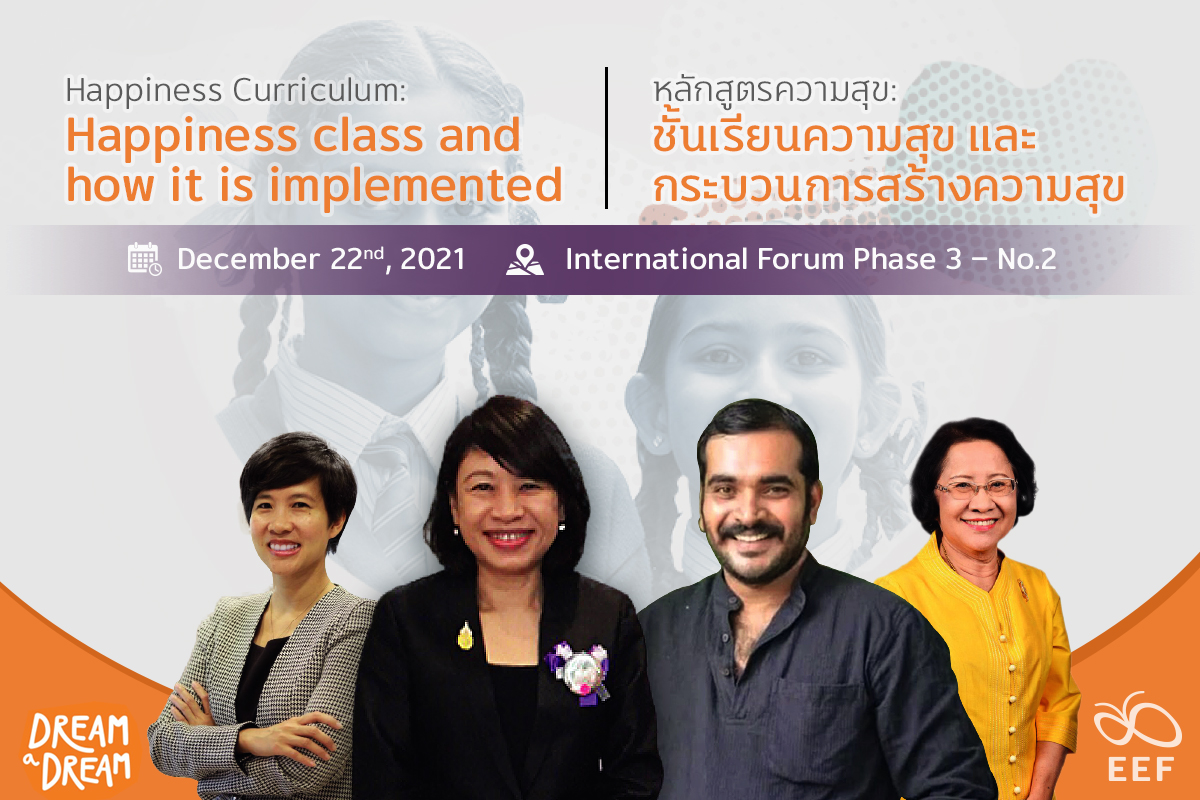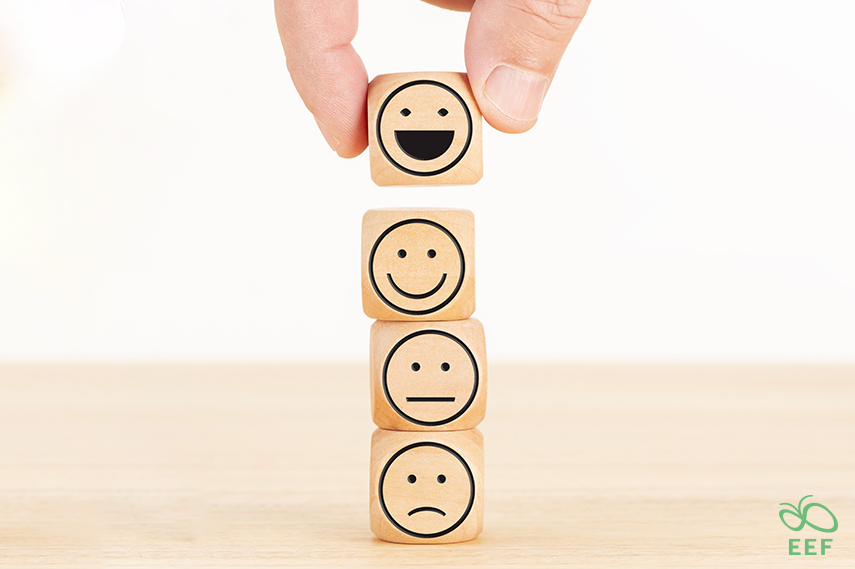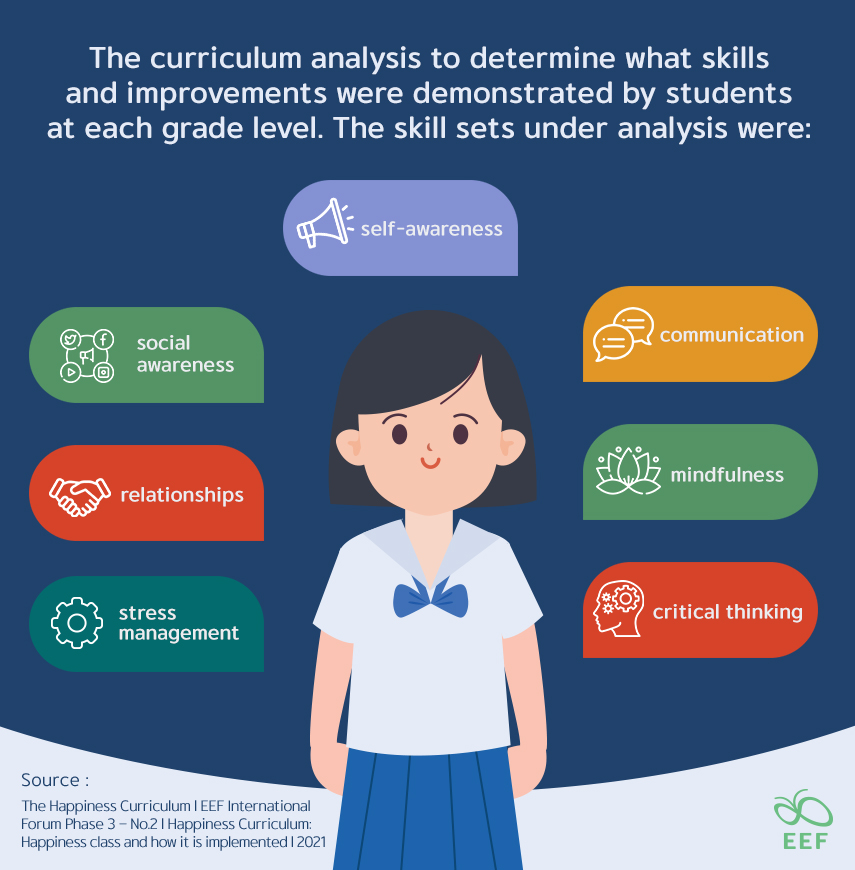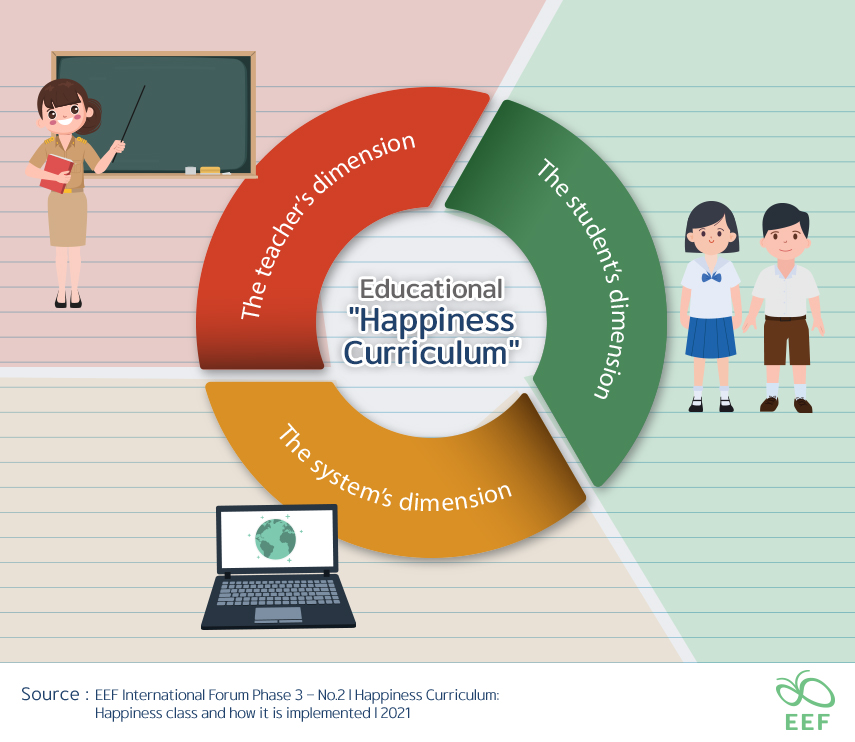
Happiness Curriculum: Happiness Class and How It Is Implemented
By: Sreehari Ravindranath, Ph.D. Associate Director – Research and Impact, Dream a Dream, India on Wednesday, December 22, 2021
According to a 2012 report published in The Lancet medical journal, India has the world’s highest suicide rate among children and adolescents. A survey by the National Crime Records Bureau (NCRB) of India found that the rate of crime committed by children and adolescents in India between 2011 and 2016 increased by 47%. And in 2017, the World Health Organization reported that one in four Indian children aged 13-15 is experiencing depression. These data reflect the worrying mental state of children in India. Once in the school system, these children were found to have trouble controlling their emotions. Irritable and unhappy in the classroom, their academic performance suffers. To make matters worse, the Indian school system emphasizes rote learning and high scores, the latter an important booster of students’ college acceptance possibilities and job prospects later on. As the world increasingly pays attention to building children’s social and emotional skills, the Delhi government, recognizing the importance of this issue, has initiated the “Happiness Curriculum” as a sustainable way to cope with the situation and the program has contributed significantly to the Indian education community since 2018.

“Happiness Curriculum”: The Process of Creation and Implementation
In 2018, the Delhi government took an initiative to create a happiness curriculum to address this alarming issue, mobilizing collaborations and inviting those concerned in Delhi, including Dream a Dream, mental health professionals, education professionals, researchers, and teachers, to jointly design this curriculum. The key idea is that education must focus on building necessary life skills and promoting children’s well-being over good academic performance. Such life skills must help children face real-world problems effectively and sustainably.
To date, the Happiness Curriculum has impacted over 800,000 students from Nursery to Grade 8 across all 1,030 government schools in Delhi. This project has been executed in stages under the leadership of the Delhi government. The government and course designers have jointly organized training for a number of the program’s trainers, who were subsequently sent to train teachers in schools. This was followed by an experimental phase, curriculum analysis, and impact assessment respectively. This process has enabled the project to progress efficiently, especially considering the scale of the project spanning more than 1,000 schools and requiring considerable teacher resources.
The Happiness Curriculum aims to develop the necessary life skills that children need in dealing with life’s crises. These skills include:
1) self-awareness and mindfulness
2) critical thinking and inquiry
3) effective communication and creative and free self-expression
4) empathy and healthy relationships
5) application of life skills to deal with stressful and conflicting situations
6) social awareness and values.

Happiness Creation Process
The curriculum involves a “Happiness Period” of 45 minutes at the start of each day in the classroom, during which students engage in a variety of activities that fall into the following three stages:
- Mindfulness practice: At this stage, teachers may ask students to sit with their eyes closed for 2-10 minutes and focus on the surrounding sounds or their breathing. This activity helps students relax and become aware of the functioning of their five senses, their train of thoughts, feelings, and the functioning of their own body and mind. However, no fixed routines and activities may vary with students’ age.
- Life skills training through alternative activities: Teachers can freely choose activities they think appropriate for students to practice a certain skill for the day. The main activity widely adopted in this project, however, is storytelling. The narrative may focus on one of the core skills and reflect real-life issues such as relationships, responsibility to others, finding life goals, compassion, gratitude, etc. After the storytelling, teachers lead classroom discussions by giving children the opportunity to comment on the stories. They may be asked what they think of the character’s actions in the story. They may imagine themselves as the characters in the story that has to deal with difficult situations. Other alternative activities include role-playing, games, presentations, or creating a gratitude wall, etc.
- Expressions: The expression component in the Happiness Curriculum focuses on the natural desire of individuals to express their thoughts and feelings. After finishing the skill training activity, teachers ask the children to discuss their thoughts and feelings at that moment, reflecting on the activities they have just completed and working on the skills they have developed. Their thoughts and feelings are thus processed, expressed in their own words, and shared with the class.
Impacts of the Curriculum
The Happiness Curriculum features a non-examination assessment policy and has no content coverage requirement or fixed schedule to follow. In order to determine if the curriculum is successful and to identify weaknesses and areas of improvement, therefore, during the first few years of implementation, the project administration carried out a curriculum analysis to determine what skills and improvements were demonstrated by students at each grade level. The skill sets under analysis were:
1) self-awareness
2) social awareness
3) relationships
4) stress management
5) communication
6) mindfulness
7) critical thinking

The curriculum analysis revealed that stress management seemed to be the least developed across all grade levels, in contrast to mindfulness, which was found to be the most developed skill in the analysis. This was likely a result of mindfulness activities practiced in the happiness class.
Another approach to measuring the impact and success of the curriculum is to conduct assessment surveys. In this case, one assessment was made by teachers and the other by students. The surveys found that in addition to the changes in students, teachers themselves had changed and acquired certain skills as well. Overall, the students showed better relationships with their teachers, with more active class participation and increased focus and attention. This was likely due to the Happiness class where students could express themselves and feel they were listened to. As for teachers, they had turned to prioritize values over academic success, a change in their orientation in designing classes and collaborating with fellow teachers in conducting activities.
The most important impact of the Happiness Curriculum is the happiness that arises in both students and teachers. The curriculum probably could not make every student happy in life in just 45 minutes, but the activities in the curriculum will gradually encourage and facilitate students’ critical thinking, help them develop important life skills, and help them learn to concentrate better in other classes. A happier student also means a happier teacher. And that is the most important indicator of the success of this curriculum any assessment can capture.
—————————————————————————-
Lead Discussion
by Dr. Tinsiri Siribodhi, UNICEF Thailand Early Childhood Development
India’s “Happiness Curriculum” serves as a very good example applicable to Thailand’s context. It is necessary to focus on the three main dimensions of our educational system, namely, the teacher’s dimension, the student’s dimension, and the system’s dimension.

- The teacher’s dimension: Teachers need to have a thorough understanding of the concepts of the curriculum, especially regarding mindfulness practice, which is very similar to meditation in Buddhism. Practicing mindfulness in the Happiness Curriculum aims to train students to be aware of themselves and ready to pick up other necessary life skills. If teachers do not understand the essence of this concept, it will be unlikely that they can train their students to the fullest extent. Secondly, teachers should have the competence to create students’ happiness. The “Southeast Asia Teachers Competency Framework” developed by the Ministry of Education together with ten other countries in Southeast Asia indicates that teachers must be able to “help the student learn”; i.e. teachers’ duty is not only to teach what has been outlined in the curriculum, but also to know their students, and use the most effective teaching and learning strategies to give feedback on how their students learn in order to bring out the students’ full potential.
- The student’s dimension: Learners’ age is an essential factor in making the happiness curriculum succeed. As children can build a solid foundation of lifelong learning most effectively during early childhood, Thailand should, therefore, start the Happiness Curriculum with children at this age, from pre-kindergarten level onwards as implemented in Delhi.
- The system’s dimension: The implementation of the Happiness Curriculum in Thailand should begin at the policy level. Relevant agencies such as the Ministry of Education or the Office of the Basic Education Commission should develop a policy for schools to proceed accordingly. On the other hand, if there are no relevant initiatives at the policy level, individual schools may get the program rolling on their own. In the worst case where the initiative has taken root at neither level above, teachers may independently bring the concept of the Happiness Curriculum to their own classes.
Watch EEF Int’Forum Record:
Part1 https://youtu.be/JsYxRZCiPb8
Part2 https://youtu.be/uA3hKAVlho8
Source:
EEF International Forum Phase 3 – No.2 l Happiness Curriculum: Happiness class and how it is implemented l 2021

